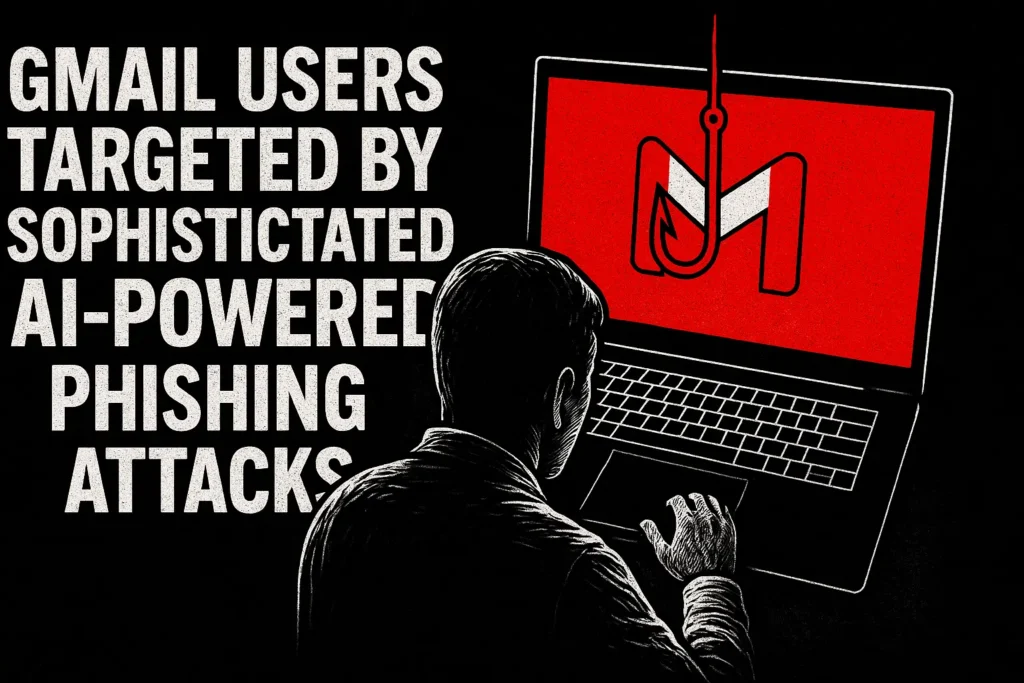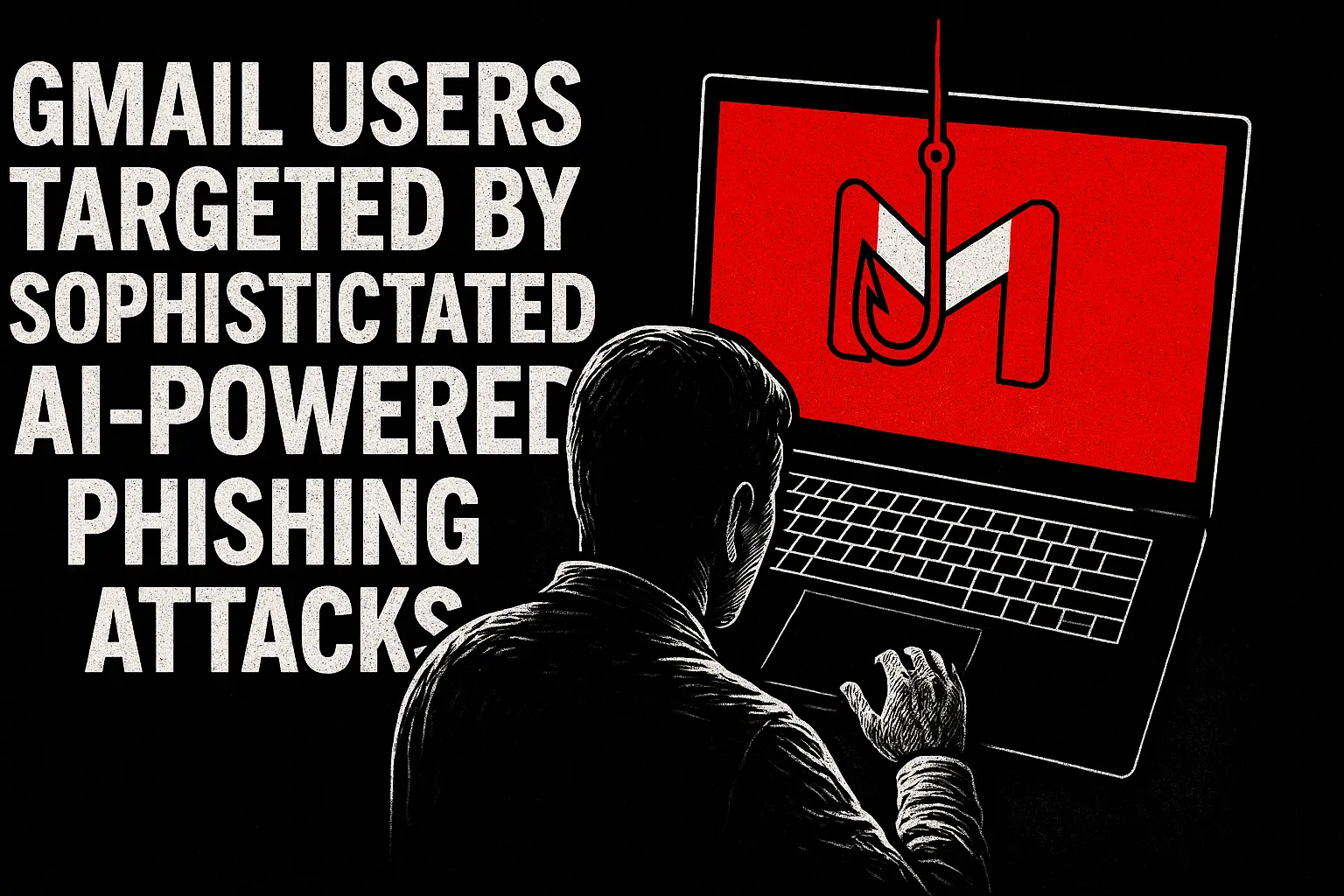
Table of Contents
gmail users targeted by sophisticated ai-powered phishing attacks
With over 2.5 billion active users, Gmail is one of the most widely used email platforms in the world, making it a prime target for cybercriminals. In recent years, phishing attacks have evolved dramatically, leveraging artificial intelligence (AI) to create highly sophisticated and convincing scams. These AI-powered phishing attacks targeting Gmail users are designed to steal personal information, compromise accounts, and even lead to identity theft. This article explores the nature of these threats, why Gmail is a focal point for attackers, notable incidents, and actionable steps to protect yourself and your organization.
The Rise of AI-Powered Phishing Attacks
Phishing attacks have been a persistent threat in the digital age, but the integration of AI has elevated their sophistication to unprecedented levels. According to the Hoxhunt Phishing Trends Report (Hoxhunt), there has been a 49% increase in phishing attempts capable of evading traditional security filters since early 2022, with AI-generated threats accounting for nearly 5% of these attacks. These statistics highlight a broader trend toward automation in cybercrime, where AI tools lower the barrier to entry for attackers, enabling even those with minimal technical expertise to launch convincing campaigns.
AI enhances phishing attacks in several ways:
- Email Personalization: AI algorithms analyze social media profiles, public records, and previous communications to craft emails that appear to come from trusted sources, addressing recipients by name and referencing specific details.
- Voice and Video Impersonation: AI-generated phone calls and deepfake-supported robocalls mimic legitimate entities, such as Google support, to deceive users.
- Dynamic Content Generation: AI can adapt email content in real-time, making it harder for security filters to detect malicious intent.
These advancements make it possible for attackers to deceive even seasoned professionals in under 60 seconds, as noted by cybersecurity experts (Forbes).
Why Gmail Users Are Prime Targets
Gmail’s widespread adoption and integration with other Google services make it an attractive target for cybercriminals. Several factors contribute to its vulnerability:
- Massive User Base: With 2.5 billion active users, Gmail offers a vast pool of potential victims.
- Integration with Google Services: Compromising a Gmail account can provide access to Google Drive, Google Pay, Google Photos, and other interconnected services, amplifying the potential damage.
- High Trust Factor: Gmail’s reputation as a secure platform leads users to trust emails that appear to originate from Google, making them more susceptible to spoofed communications.
- Business and Personal Use: Gmail is used for both personal and professional purposes, making it a prime target for Business Email Compromise (BEC) scams, which can result in significant financial losses.
The Malwarebytes article (Malwarebytes) notes that the low cost of AI tools—starting at just $5—has made these attacks accessible to a wide range of cybercriminals, further increasing the threat to Gmail users.
Notable Incidents
Recent incidents illustrate the sophistication of AI-powered phishing attacks targeting Gmail users:
- AI-Generated Phone Calls: Attackers use AI to make phone calls that appear to originate from Google, often using spoofed caller IDs. These calls claim that the user’s account has been compromised and urge them to provide a recovery code to “secure” their account. In reality, sharing the code grants attackers access to the account (Mobile ID World).
- Personalized Emails: AI-crafted emails can deceive users in under 60 seconds by mimicking legitimate Google communications. These emails often prompt users to click malicious links or enter credentials on fake login portals (eSecurity Planet).
- Open Graph Spoofing Toolkit: A new tool, first sold for $2,500 on a Russian criminal forum in October 2024, manipulates metadata to create deceptive links, enhancing the effectiveness of phishing campaigns (Forbes).
The FBI has issued multiple warnings about these attacks, emphasizing their potential for financial losses, reputational damage, and data compromise (Newsweek).
How These Attacks Work
A typical AI-powered phishing attack targeting Gmail users follows a multi-step process:
- Initial Contact: The attack often begins with a phone call or text message claiming to be from Google, warning of unauthorized access attempts. The caller ID may appear legitimate due to spoofing techniques.
- Fraudulent Email: A follow-up email, purportedly from Google, contains a code or link that the victim is urged to use to secure their account. These emails are crafted using AI to mimic Google’s branding and language.
- Credential Theft: Clicking the link directs the user to a fake login portal where they enter their credentials, or sharing the recovery code grants attackers access to the account.
- Account Compromise: Once access is gained, attackers can steal sensitive information, change passwords, or use the account to launch further attacks.
The Fox News article (Fox News) highlights a case where a victim discovered that the “person” on the phone was an AI, underscoring the deceptive nature of these attacks.
Google’s Response
Google has taken several steps to combat AI-powered phishing attacks:
- Global Signal Exchange: Google has partnered with the Global Anti-Scam Alliance and DNS Research Federation to create a database of scam and fraud attempts, focusing on URLs, IP addresses, and phishing reports (CNET).
- AI-Driven Threat Intelligence: Google uses AI to recognize patterns in phishing attempts, blocking 99.9% of phishing emails, spam, and malware.
- Safe Browsing Warnings: Google’s Safe Browsing feature alerts users to malicious links before they are clicked.
- Enhanced Security Features: Google promotes Two-Step Verification (2SV) and offers the Advanced Protection Program for high-risk users, such as journalists and activists.
Google also advises users to:
- Inspect email addresses for discrepancies.
- Check for unusual account activity via the Gmail web client.
- Enable 2FA to add an extra layer of security.
- Trust their instincts, as Google will never request sensitive information via email without verification (Creative Networks).
Protecting Yourself from AI-Powered Phishing Attacks
To safeguard your Gmail account, consider the following best practices:
- Be Skeptical of Unexpected Communications: Treat unsolicited emails, calls, or texts with caution, especially those claiming urgent action is needed.
- Verify Sender Authenticity: Check the sender’s email address for subtle discrepancies (e.g., “[email protected]” instead of “[email protected]”).
- Avoid Clicking Unknown Links: Hover over links to inspect the URL before clicking. If in doubt, navigate directly to Google’s official website.
- Enable 2FA: Activate Two-Factor Authentication to require a secondary verification step, such as a code sent to your phone.
- Keep Software Updated: Ensure your browser, operating system, and antivirus software are up to date to protect against vulnerabilities.
- Educate Others: Share knowledge about phishing tactics with friends, family, and colleagues to build a more resilient community.
The TechTimes article (TechTimes) emphasizes the importance of proactive measures, noting that traditional email filters are increasingly ineffective against AI-driven attacks.
The Broader Implications
The rise of AI-powered phishing attacks signals a new era of cybercrime, where automation and sophistication make it easier for attackers to target large populations. The Forbes article (Forbes) describes these attacks as “stunningly inventive,” highlighting the need for continuous innovation in cybersecurity. As AI tools become more accessible, the barrier to entry for cybercriminals continues to decrease, posing challenges for both individuals and organizations.
Moreover, the potential consequences of a compromised Gmail account extend beyond personal inconvenience. Attackers can access sensitive data, perpetrate financial fraud, or use the account to launch further attacks, such as spear phishing or BEC scams. The Moneycontrol article (Moneycontrol) notes that phishing scams resulted in $8.8 billion in losses in 2022 alone, underscoring the economic impact of these threats
Latest Anti-Phishing Technologies and Tools
Protecting against phishing attacks needs advanced tools. Google workspace security now uses smart defense systems. These systems help keep users safe from email threats.
Today’s anti-phishing tools use artificial intelligence and machine learning. They look at many data points to spot threats early. This way, they can stop security breaches before they happen.
- AI-powered threat detection algorithms
- Real-time email scanning technologies
- Behavioral analysis systems
- Advanced machine learning models
Some key anti-phishing technologies are making a big difference:
| Technology | Primary Function | Detection Rate |
| Deep Learning Classifiers | Identifying sophisticated phishing attempts | 92-95% |
| Natural Language Processing | Analyzing email contentfor malicious intent | 88-91% |
| Predictive Threat Intelligence | Proactively blocking emerging threats | 85-89% |
To boost Google workspace security, use multi-layered protection.
Adding advanced anti-phishing tools and educating users is key to fighting
email threats.
“The future of email security lies in intelligent, adaptive technologies that can outsmart emerging phishing techniques.” – Cybersecurity Expert
Using these new technologies gives users strong protection against phishingIt makes online communication safer for everyone.
Conclusion
AI-powered phishing attacks targeting Gmail users represent a significant and evolving threat in the digital landscape. With their ability to bypass traditional security measures and deceive even cautious users, these scams require heightened awareness and proactive defense strategies. By understanding the tactics used by cybercriminals, leveraging Google’s security features, and adopting best practices like 2FA, Gmail users can significantly reduce their risk of falling victim to these sophisticated attacks. Staying informed and vigilant is the key to protecting your digital identity in an era of AI-driven cybercrime.
FAQ
How are Ai-powered attacks different from traditional phishing
attempts?
AI-powered phishing uses advanced algorithms to create sophisticated emails.
These emails are more convincing and personalized than traditional phishin They can also evade security filters more effectively
What makes Gmail users particularly vulnerable to
these AI-powered attacks?
Gmail users are targeted because of its large user base and AI advancement
Attackers use AI to analyze user data and craft believable emails.
These emails are hard to tell from real messages.
How can I protect my Gmail account from
AI-powered phishing attempts?
To protect your account,
enable two factor authentication and update your security settings.
Use Google’s Security Checkup and be cautious of suspicious emails.
Watch for unusual sender addresses and unexpected attachments.
What technologies are Google using to combat
AI-powered phishing?
Google is using advanced machine learning to fight phishing.
They have improved email scanning and behavioral analysis tools.
They also have a threat intelligence network that updates protection
against new attacks.
Can AI actually write convincing phishing emails?
Yes, AI can write convincing emails. It uses natural language processing tocreate messages that seem real. These messages can be personalized and
urgent, making them hard to spot.
What are the potential consequences of falling victim
to an AI-powered phishing attack?
Falling victim can lead to serious risks, like identity theft and financialfraud.
It can also result in data breaches and damage to personal and professiona
networks.
These attacks can cause lasting harm.
How quickly do AI phishing techniques evolve?
AI phishing evolves fast, with attackers constantly improving their methodsThis makes it hard for traditional security to keep up New threats emerge quickly.
Are small businesses and individual users at the same risk as large corporations?
Small businesses and individuals are just as vulnerable as big companies.
They often have weaker cybersecurity, making them easier targets.
AI phishing attacks can affect anyone.






Leave a Reply